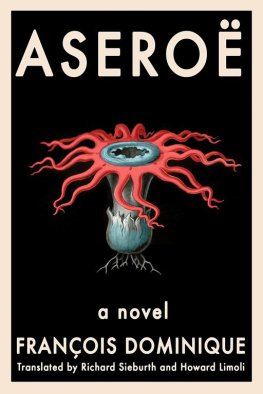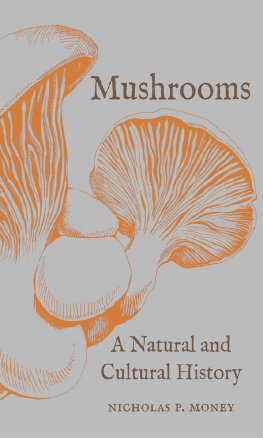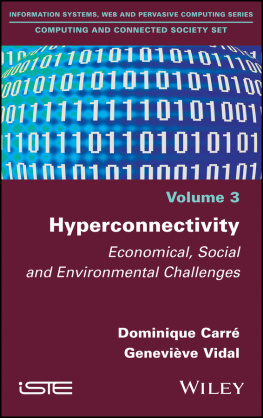François Dominique - Aseroë
Here you can read online François Dominique - Aseroë full text of the book (entire story) in english for free. Download pdf and epub, get meaning, cover and reviews about this ebook. City: New York, year: 2020, publisher: Bellevue Literary Press, genre: Prose. Description of the work, (preface) as well as reviews are available. Best literature library LitArk.com created for fans of good reading and offers a wide selection of genres:
Romance novel
Science fiction
Adventure
Detective
Science
History
Home and family
Prose
Art
Politics
Computer
Non-fiction
Religion
Business
Children
Humor
Choose a favorite category and find really read worthwhile books. Enjoy immersion in the world of imagination, feel the emotions of the characters or learn something new for yourself, make an fascinating discovery.
- Book:Aseroë
- Author:
- Publisher:Bellevue Literary Press
- Genre:
- Year:2020
- City:New York
- ISBN:978-1-942658-78-8
- Rating:4 / 5
- Favourites:Add to favourites
- Your mark:
- 80
- 1
- 2
- 3
- 4
- 5
Aseroë: summary, description and annotation
We offer to read an annotation, description, summary or preface (depends on what the author of the book "Aseroë" wrote himself). If you haven't found the necessary information about the book — write in the comments, we will try to find it.
Aseroë — read online for free the complete book (whole text) full work
Below is the text of the book, divided by pages. System saving the place of the last page read, allows you to conveniently read the book "Aseroë" online for free, without having to search again every time where you left off. Put a bookmark, and you can go to the page where you finished reading at any time.
Font size:
Interval:
Bookmark:
Franois Dominique

ASERO
Translated by
Richard Sieburth and Howard Limoli
To Suzanne Limoli and Richard Sieburth
1

Asero
SHE HAS ALWAYS AROUSED special feelings in me. Every year, at the outset of summer or sometimes as late as mid-autumn, I never fail to pay her a visit. It doesnt take me long. While others might pass within a few feet of her, I see her from a distance, I recognize her, I approach her and bend down over her and in a soft voice speak the words that suit her, the name she bears. She immediately starts to blush. Her slender, elegant footas with all her kindis attractively flushed.
I have no illusions: I know this slight flush is not a response to any affectionate words I might address to her, but a reaction to the properties of the ambient air, to the amount of carbon dioxide that the natural respiration of plants (or just my tainted breath) is likely to increase.
Once picked, she takes on a more vivid coloring, as though indisposed. Shell be just as sweet to the taste, crisp and scented, so long as you dont spoil her aroma with garlic and spices or smother her in common meadow mushrooms.
Amanita rubescens is the only apparently sentient mushroom I can name.
People are right to avoid that very ancient but very foolish tendency to project human attributes onto nature. I stroll through the woods, overwhelmed by the scenerythe dawns light, the lofty peaks, the crystal springsand my mind is stupefied by the flood of metaphors that invade me.

Determined not to dabble in tawdry imagery, I wondered whether a state of mind might existor rather, a state of matterin which words and things were not separate. If so, this discovery would open up a radically new field to all the forms of creation. As I idly posed to myself this curious question, I couldnt begin to suspect the inhuman character of the artificial reality that would inevitably ensue.
I think the moment has come to explain my experiment. Let me first point out that mushrooms make up a very vast and almost infinite collection. When experts suggest the figure of 120,000 species of mushrooms, they know this figure has to be increased over the course of years: the multiplication of varieties, the abrupt mutations, the disclosure of new forms whose spores have been lying dormant for centuries force us to add endlessly to the matrix of a rigorous classification system already encumbered with unclassifiable types as well as with strange subspecies and their offspring. Besides, certain of these mycological abortions are so odd that you wonder whether the classification system itself, so patiently worked out by Qulet, Khner, Pilt, Romagnesi and so many others, shouldnt be reopened for examination.
What animal or vegetable species would be capable of evolving to the point of rendering obsolete the great divisions between vertebrates and invertebrates, cryptogams and phanerogams? Not a single one. That doesnt prevent the animal or vegetable kingdom from creating new species (the innumerable varieties of orchids provide a good example), but in these cases the main lines of the classification system have reached a sufficient level of certainty to embrace all species, including those whose livesyet to comecannot be named.
As for mushrooms, its another matter altogether. They dont belong to a defined kingdom. In a number of ways, they are animals, protozoans or protophytes; in other ways, theyre vegetables whose growth is geotropic, like certain algae. Since their appearance on Earth seems to have preceded both the vegetable and animal kingdoms, people simply say that they share properties with both. Consequently, it will take, among all the subspecies yet to come, only a single mushroom whose properties clearly belong both to the animal and vegetable worlds for the great division between Basidiomycota and Ascomycota to collapse on the spot.
I would have preferred my experiment to deal with the family of mushrooms called Amanitaceae fungi. They are elegant, finely colored, and always displayexcept for the fly agaric, or muscariaa certain propensity toward solitude, which appeals to me. In addition, Amanita seem to want to behave as if they provide the most significant illustration of those problems that the life of silence and the power of naming share: gentleness and violence, good and evil, edible and nonedible, fertile and murderous. In this they resemble that good/bad thing that Plato submits to the hasty judgment of the young Alcibi-ades. Yet from the point of view of beauty, they escape contradiction: they are all splendid, without exception. The most beautiful and finest of them all (preferable to the morel and the truffle) is the Amanita of the Caesars, or True Orange, whose color evokes the fiery opal (first comparison), the suns disk at twilight (second comparison), or the mineral arsenic (number three). At the opposite extreme (but no less beautiful, all white and nacreous) is the Amanita phalloides (or death cap mushroom)poison to the core. Horrible abdominal pains, profuse sweating, a burning thirst, shivering, cramps, progressive cooling of the extremities accompanied by terrible anxiety: such are the harbingers of the death, one to three weeks later, of any enemy who might eat it.
Thus, two varieties of the same genusthe Amanitaoffer the best and the worst. The mind is the only thing I can name that shares in such extremes.
But I needed to find a different species, less fixed, more capable of abrupt mutations, which might simultaneously modify the order of things and the system of naming them.

There is another type of mushroom, almost bastardized, an ill-defined member of the family of Phallaceae, which the experts have named Anthurus archeri and which occurs in the form of Asero.
Having originated in Tasmania and South Africa, it appeared in France very suddenly in the fall of 1920, in the environs of La Petite-Raon, to the south of Saint-Di on the western slope of the Vosges Mountains. One finds in the press of that period reports of a superstitious nature and accusations of witchcraft leading to investigations by the police. These new forms of Anthurus, which appeared so abruptly in the underbrush of the Vosges Mountains, were a definite cause for alarm. One doctor in Saint-Di, named Lucas, went so far as to declare that this unknown fungus was a carrier of infectious germs introduced into French territory by German patriot extremists seeking their postwar revenge. An epidemic of flu over the course of the winter came just in time to back up his claim and to furnish a few certified lunatics with the basis for a legal action to be taken against the military authorities (Journal des Vosges, October 26, 1920, p. 3).
Today the Anthurus has become common in Burgundy (near Cteaux Abbey), in the Jura Mountains, and in Savoy. It should take only one or two generations for it to reach all the forests in Europe.
The Anthurus archeri initially assumes the form of a round, firm, membranous egg. If one cuts it open, one observes in either half, embedded in its translucid and cartilaginous flesh, two ruddy structures whose curvature and folds evoke a twinned fetus in its first stage of gestation, before any part of it has acquired the contours allowing for more precise identification. After several days, the cuticle cracks, allowing for the emergence of between five and seven thinly drawn triangular lashes, which rapidly sprout from the earth and rise up to six or eight inches above the surface of the soil, then curve backward like iris petals. These lashes have a scarlet surface, covered with a coarse gleba. Several days later, the gleba becomes covered with a network of damp black pustules.
Font size:
Interval:
Bookmark:
Similar books «Aseroë»
Look at similar books to Aseroë. We have selected literature similar in name and meaning in the hope of providing readers with more options to find new, interesting, not yet read works.
Discussion, reviews of the book Aseroë and just readers' own opinions. Leave your comments, write what you think about the work, its meaning or the main characters. Specify what exactly you liked and what you didn't like, and why you think so.










